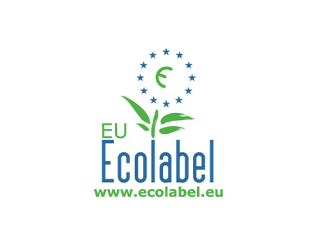Standards are vital to ensure your safety on the road and underpin every trip you take in your vehicle, that’s the message from NSAI who today offered tips for motorists as Road Safety Week continues.
As part of Road Safety Week there will be a focus on tyre safety this Thursday. When checking your tyres it is important to look for simple marks that show your tyres have been tested by the appropriate body and are safe to carry you through the winter months.
“We depend on standards for everything to run smoothly, but most of the time we don’t even notice that they are there. We expect that the seat belt we put on when we get in the car for the daily commute will keep us safe because it is made to a standard. The brakes will work because they are made to standard. The child car seat will work because it’s made to standard. You assume you’ll get the correct measure of fuel from the pump because it is calibrated to measurement standards,” said Maurice Buckley, CEO, NSAI.
As well as making sure school children are properly seat belted, parents should make sure that car seats for younger children comply with the European standard requirement (UN-ECE R44.04). The label attached to the seat must contain three essential items:
The use of tyres that carry the e mark is a very important aspect to motoring safety. NSAI is therefore urging vehicle owners to check their tyres for compliance with the e-mark. Purchasing tyres that do not display this mark is illegal. Motorists should also always ensure that their tyres are appropriately inflated and have more than the minimum tread depth. Under-inflated and worn out tyres increase the risk of road accidents as well as reducing fuel efficiency.
The e mark is located on the sidewall of the tyre and is followed by a number from 1 to 50, with the 'e' mark surrounded by a rectangle and the “E” mark surrounded by a circle. "E" means the tyre has been tested against international regulations, whilst "e" means the tyre has been tested against European directives. A car fitted with a tyre that does not carry the “E” or “e” mark of any European member state Approval Authority will fail the NCT test. It is not possible to “E” or “e” mark tyres retrospectively.
“Road Safety Week highlights the importance of standards in daily life. As the winter approaches it is important to check your vehicle for defects and have it serviced regularly to ensure a safe winter driving experience.” continued Maurice Buckley.
NSAI provides the invisible infrastructure underpinning all of these standards. Where the standard already exists, NSAI works with businesses to help them apply it. Where a requirement for a standard exists, NSAI will work with businesses to create the appropriate standard. Some standards are mandatory such as safety standards, across a wide range of products.
For media queries please contact:
Peter O'Reilly, NSAI Corporate Services
Tel: 01 807 3800
Email: peter.oreilly@nsai.ie
As part of Road Safety Week there will be a focus on tyre safety this Thursday. When checking your tyres it is important to look for simple marks that show your tyres have been tested by the appropriate body and are safe to carry you through the winter months.
“We depend on standards for everything to run smoothly, but most of the time we don’t even notice that they are there. We expect that the seat belt we put on when we get in the car for the daily commute will keep us safe because it is made to a standard. The brakes will work because they are made to standard. The child car seat will work because it’s made to standard. You assume you’ll get the correct measure of fuel from the pump because it is calibrated to measurement standards,” said Maurice Buckley, CEO, NSAI.
Pick the right car seat
As well as making sure school children are properly seat belted, parents should make sure that car seats for younger children comply with the European standard requirement (UN-ECE R44.04). The label attached to the seat must contain three essential items:
- The letter ‘E’ contained in a circle followed by a number. This number indicates the European Approval Authority which granted the child seat approval.
- The words ISOFIX along with its size class. The words Universal, Semi-universal, restricted or vehicle specific maybe displayed. The symbol Y is for a restraint with crotch strap and the symbol S is for a special needs restraint.
- A mass range that does not exceed the weight of the child. For example 0-13kg is suitable for a new born child.
Check that your tyres carry the “E” or “e” mark
The use of tyres that carry the e mark is a very important aspect to motoring safety. NSAI is therefore urging vehicle owners to check their tyres for compliance with the e-mark. Purchasing tyres that do not display this mark is illegal. Motorists should also always ensure that their tyres are appropriately inflated and have more than the minimum tread depth. Under-inflated and worn out tyres increase the risk of road accidents as well as reducing fuel efficiency.The e mark is located on the sidewall of the tyre and is followed by a number from 1 to 50, with the 'e' mark surrounded by a rectangle and the “E” mark surrounded by a circle. "E" means the tyre has been tested against international regulations, whilst "e" means the tyre has been tested against European directives. A car fitted with a tyre that does not carry the “E” or “e” mark of any European member state Approval Authority will fail the NCT test. It is not possible to “E” or “e” mark tyres retrospectively.
“Road Safety Week highlights the importance of standards in daily life. As the winter approaches it is important to check your vehicle for defects and have it serviced regularly to ensure a safe winter driving experience.” continued Maurice Buckley.
NSAI provides the invisible infrastructure underpinning all of these standards. Where the standard already exists, NSAI works with businesses to help them apply it. Where a requirement for a standard exists, NSAI will work with businesses to create the appropriate standard. Some standards are mandatory such as safety standards, across a wide range of products.
Road Safety Links
- RSA Road Safety Week
- RSA’s child safety in cars campaign – Check it Fits Roadshow – Tipperary from 21st to 23rd October
- Irish Tyre Industry Association is offering Free Tyre Safety Checks - Thursday 9th October
For media queries please contact:
Peter O'Reilly, NSAI Corporate Services
Tel: 01 807 3800
Email: peter.oreilly@nsai.ie



